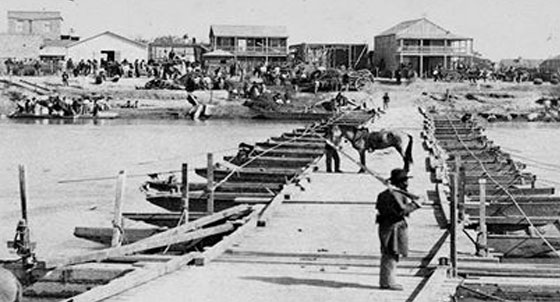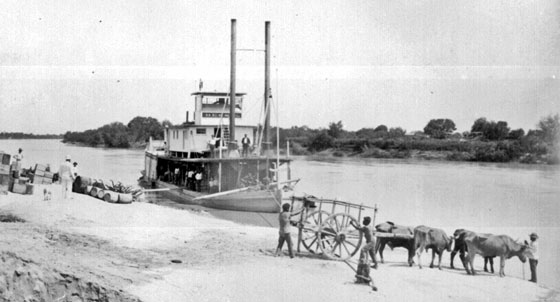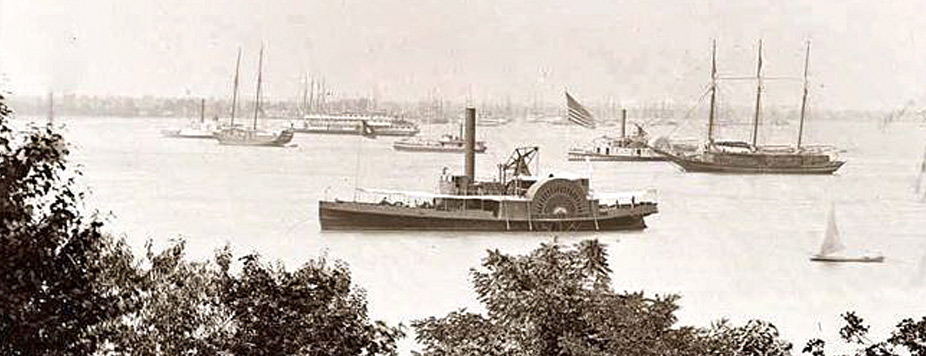Rio Grande
It is not surprising that the Rio Grande itself played a central role in the history of the Civil War in the Rio Grande Valley. As Federal blockades sealed off the Confederate coastline, Mexico became a vital outlet for southerners to export their cotton. But the river's significance dates back much earlier. In the 1848 Treaty of Guadalupe Hidalgo, the United States and Mexico agreed that the waterway which divided their two nations would be an international river, open to merchants of both countries. In the 1860s, this agreement prohibited the Union Navy from halting shipments along the river. Merchants brought their cotton to Matamoros, loaded it on Mexican-registered steamboats, and transported it to Bagdad where it was transferred to larger ships for international distribution. Union forces could not halt this flow of supplies without widening the war's scope to Mexico, which was itself beset at that time by civil war. Although the U.S. Army did briefly occupy towns of the Rio Grande Valley and slowed the flow of cotton southward, boats filled with cotton continued to ply the river's waters, unimpeded for the duration of the war.
Listen
No resulta sorprendente que el Río Grande en sí mismo desempeñara un papel crucial en el desarrollo histórico de la Guerra de Secesión de Estados Unidos en El Valle: según los bloqueos federales aislaban la línea costera confederada, México se convirtió en una salida vital para las exportaciones algodoneras de los sureños. Pero la importancia del río se remonta a mucho antes: en 1848, en virtud del Tratado de Guadalupe Hidalgo, los Estados Unidos y México acordaron que esta vía fluvial divisora de ambas naciones se constituiría en aguas internacionales, abiertas al comercio de ambos países. En la década de 1860, este compromiso impedía que la Armada de la Unión interceptara las mercancías despachadas por el río, con lo que los comerciantes llevaban el algodón hasta Matamoros, lo embarcaban en vapores fletados bajo bandera mexicana hasta Bagdad, donde se transbordaba a embarcaciones de mayor calado para su distribución internacional. Las tropas unionistas no podían detener este flujo de suministros sin expandir el alcance de la guerra hasta México, que se encontraba a su vez en ese momento sumido en una guerra civil. Si bien el ejército de los EE. UU. ocupó brevemente algunas poblaciones de El Valle del Río Grande, aminorando así el tráfico de algodón dirigido hacia el sur, las aguas del río siguieron siendo surcadas con libertad hasta el final de la contienda por embarcaciones cargadas de esta fibra.
Escucha
Details
Location: Below El Paso, the Rio Grande serves as part of the border between the United States and Mexico.
Access: Not available for public access.



